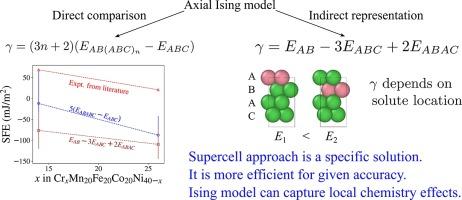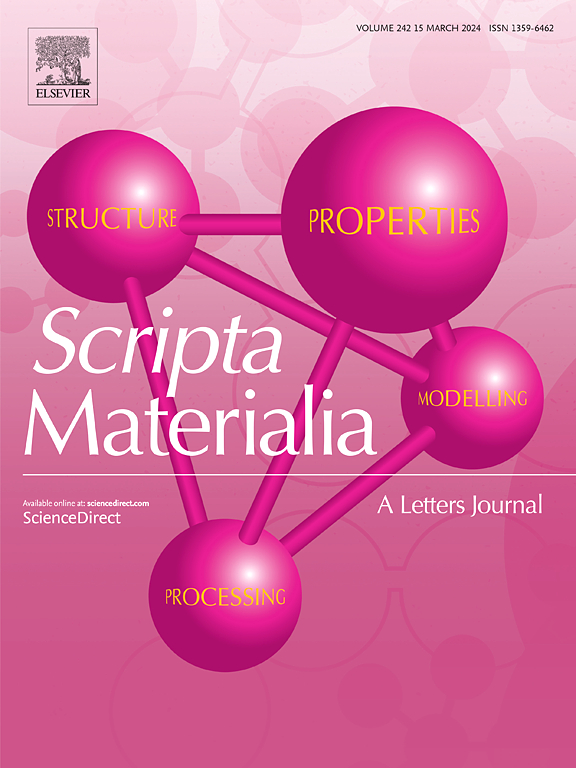Exploring stacking fault energy with the axial Ising model: A renewed approach
IF 5.6
2区 材料科学
Q2 MATERIALS SCIENCE, MULTIDISCIPLINARY
引用次数: 0
Abstract
In this work we revisit the axial Ising model for computing intrinsic stacking fault energies (), which are important in alloy design. We find that the supercell approach, which directly compares the energies of fcc stacking with and without a fault, is a specific solution of the Ising model and is the most elegant and efficient among the solutions of the same order of accuracy. Contrary to the traditional belief that only the supercell approach can capture the effect of local chemistry, we demonstrate that local chemistry also influences in the axial Ising model. We also propose a new formula , which is similarly efficient, simpler, and more accurate compared to the widely used . We tested the new formula on pure Ni, Ni-Co alloys, and Cr-Mn-Fe-Co-Ni high entropy alloys and found satisfactory results.

用轴向伊辛模型探索堆积断层能量:一种新方法
在这项研究中,我们重新审视了用于计算本征堆积断层能量(γISF)的轴向伊辛模型,这在合金设计中非常重要。我们发现,直接比较有断层和无断层的 fcc 堆积能量的超级电池方法是伊辛模型的一种特定解决方案,而且是相同精度等级的解决方案中最优雅、最高效的。与只有超级电池方法才能捕捉局部化学效应的传统观点相反,我们证明了局部化学也会影响轴向伊辛模型中的γISF。我们还提出了一个新公式 γISF=5EABABC-5EABC,与广泛使用的 γISF=EAB+2EABAC-3EABC相比,它同样高效、简单、准确。我们在纯镍、镍-钴合金和铬-锰-铁-镍高熵合金上测试了新公式,结果令人满意。
本文章由计算机程序翻译,如有差异,请以英文原文为准。
求助全文
约1分钟内获得全文
求助全文
来源期刊

Scripta Materialia
工程技术-材料科学:综合
CiteScore
11.40
自引率
5.00%
发文量
581
审稿时长
34 days
期刊介绍:
Scripta Materialia is a LETTERS journal of Acta Materialia, providing a forum for the rapid publication of short communications on the relationship between the structure and the properties of inorganic materials. The emphasis is on originality rather than incremental research. Short reports on the development of materials with novel or substantially improved properties are also welcomed. Emphasis is on either the functional or mechanical behavior of metals, ceramics and semiconductors at all length scales.
 求助内容:
求助内容: 应助结果提醒方式:
应助结果提醒方式:


